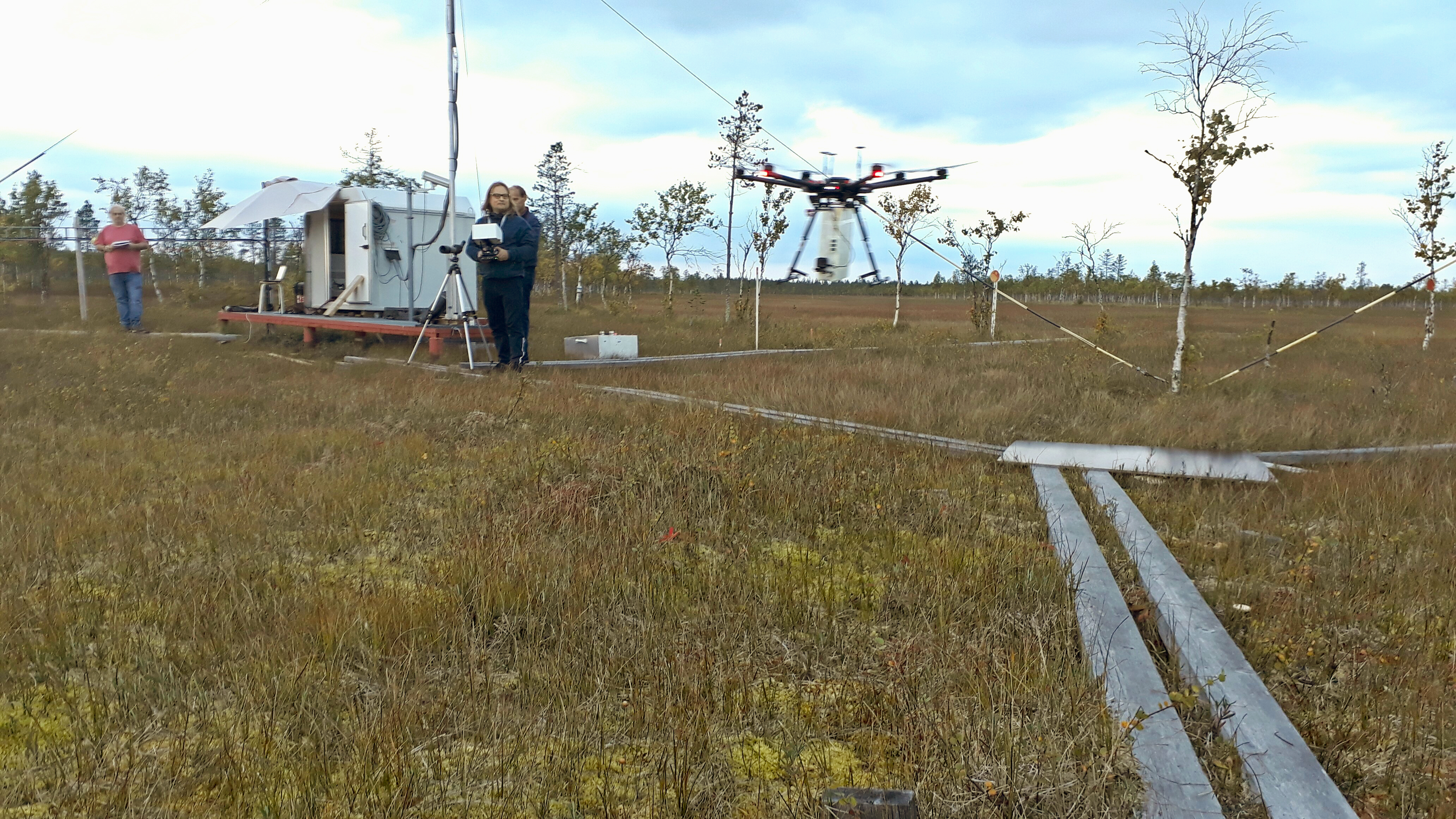Wetlands are the main source of methane released into the atmosphere which is why the Spectroscopy Group at RAL Space were based last week at wetland site near Sodankylä, in Northern Finland. They have been working with scientists from the Finnish Meteorological Institute (FMI) to trial several recently developed research methods to improve estimates of methane emissions down to a scale of a few hundred meters.
By providing more geographically accurate measurements on the ground, combined with new instruments on board satellites, better estimates of global emissions can be obtained. Ground based observations also ensure the validation of space-based measurements.
The instrument developed by the Spectroscopy Group of the Space Department at RAL is a multi-beam open-path laser dispersion spectrometer. It is using an interband cascade laser (ICL) operating at 3.3 µm as a light source to target the intense fundamental spectral bands of methane. This ensures sensing methane over a large areas, matching the forth-coming spatial resolution of greenhouse gas sensing satellites.
The system sequentially scans over seven open paths very rapidly (~15s) to measure integrated path methane concentrations at different distances and different angles. The data are then processed to quantify and locate emission sources within the investigated area. The campaign is the first trial deployment in an arctic wetland, to understand the impact of warming on high latitude wetland emissions.
The team have accompanied these measurements with in situ measurements taken with an instrument developed by FMI mounted on a drone. At FMI Sodankylä, greenhouse gas measurements are run regularly, making it an excellent location to test and compare new monitoring equipment.

